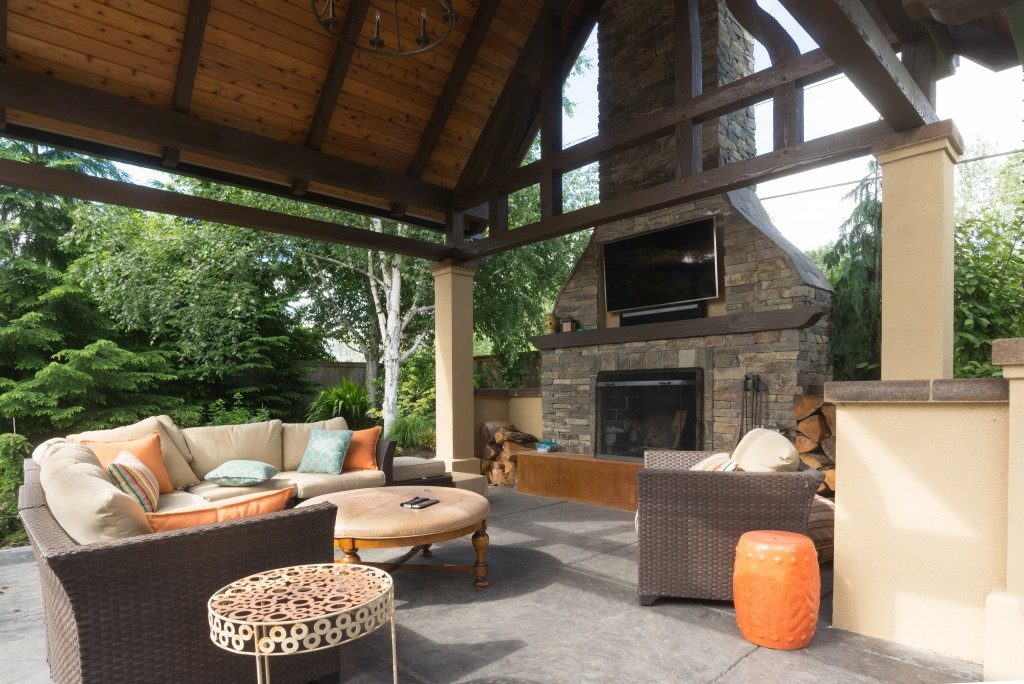With dwindling indoor spaces, an outdoor covered area will be a welcome blessing for both residential and commercial establishments. This can form not only an entertainment space and workstation but also a storage solution. Thankfully, the area does not need a substantial cash investment. You can cut back on the costs of building an outdoor shelter by over 70% by opting for fabric rather than traditional building materials.
The fabric structures are as strong or durable as those made using conventional building materials. They can form temporary or permanent shelters depending on their material. The following are the fabric options that you have for your outdoor haven:
Woven Fabrics
This category encompasses a broad range of fabrics, including inexpensive ones like cotton and nylon and expensive ones like acrylic and polyester. Woven fabrics come in several designs since they can be dyed and decorated in different ways. Most of them feature a tight weave, which blocks approximately 99% of the sun’s rays and are water-resistant. They also undergo different treatments to make them UV-resistant. However, the tight design of woven fabrics also restricts airflow. Hence, you might need fans to keep the space comfortable.
Knitted Mesh Fabrics
These have durable or strong lock stitches that can resist fraying, stretching, sagging and tearing. They also have high tensile strength and can be pulled tight with minimal impact on their appearance. Knitted mesh fabrics come with a UVF (UV protection factor) of 30-90%. A high UVF rating generally denotes dense threads and small holes on your shelter fabric. Thankfully, the thick material will not affect the shelter’s airflow.
Woven Mesh Fabrics
These are sometimes called “shade cloths.” They are used in applications where sag resistance, UV-protection, appearance, and longevity are not a concern. Hence, woven mesh fabrics are the best choice for short-term agricultural and construction use. They offer UV protection like knitted mesh fabric while still allowing comfortable airflow. Though cheaper compared to most options, woven mesh fabrics are prone to fraying in harsh weather.
PVC Fabrics
 These comprise a polyester or cotton weave coated on both sides using PVC. The PVC coating makes the fabric waterproof and enhances its strength. The primary drawback of PVC fabrics is their considerable weight. In addition, condensation often forms on the material. You can include ventilation in your outdoor shelter to minimise condensation.
These comprise a polyester or cotton weave coated on both sides using PVC. The PVC coating makes the fabric waterproof and enhances its strength. The primary drawback of PVC fabrics is their considerable weight. In addition, condensation often forms on the material. You can include ventilation in your outdoor shelter to minimise condensation.
Polyolefin Fabric
The main types of polyolefin fabrics used for shelters are polyethene and polypropylene. Polyolefin fabrics are lightweight, waterproof, and durable. However, the materials will become brittle if you expose them to excess UV rays. To minimise this risk, some manufacturers use UV inhibitors.
In the end, there are different fastening options for your outdoor shelter. Plastic locking clips, stainless steel snap-hooks, steel D-rings, and wooden fasteners are some of your choices. If you feel unsure, you should get your supplier’s recommendation. By doing so, you can pick the right fastener for your shelter’s material as well as your area’s weather conditions. In addition, by seeking professional assistance, you can save much time and money.

